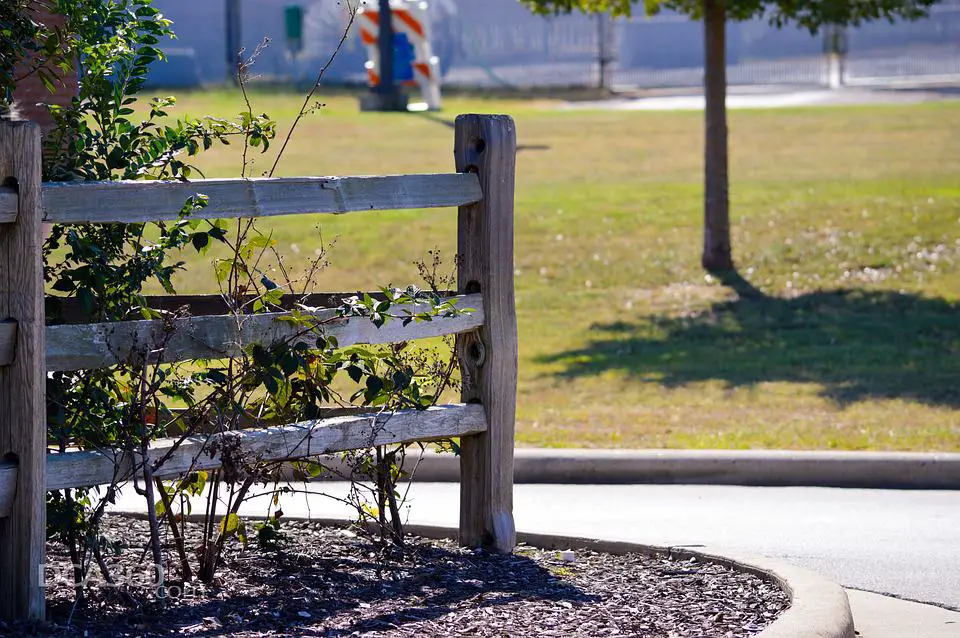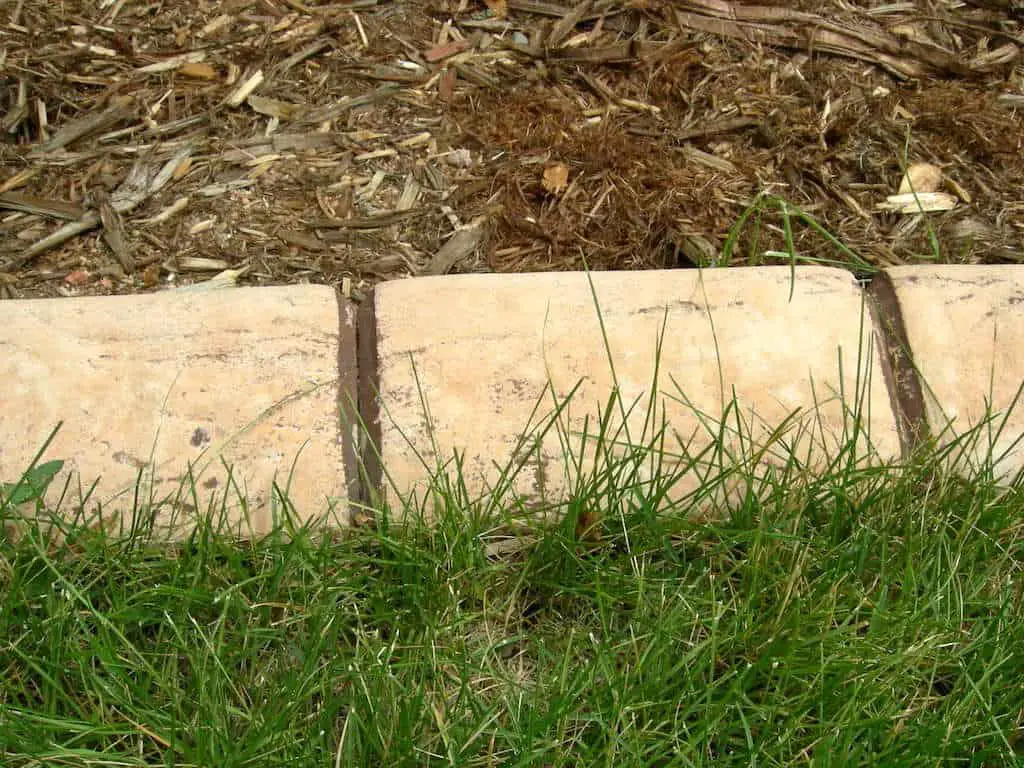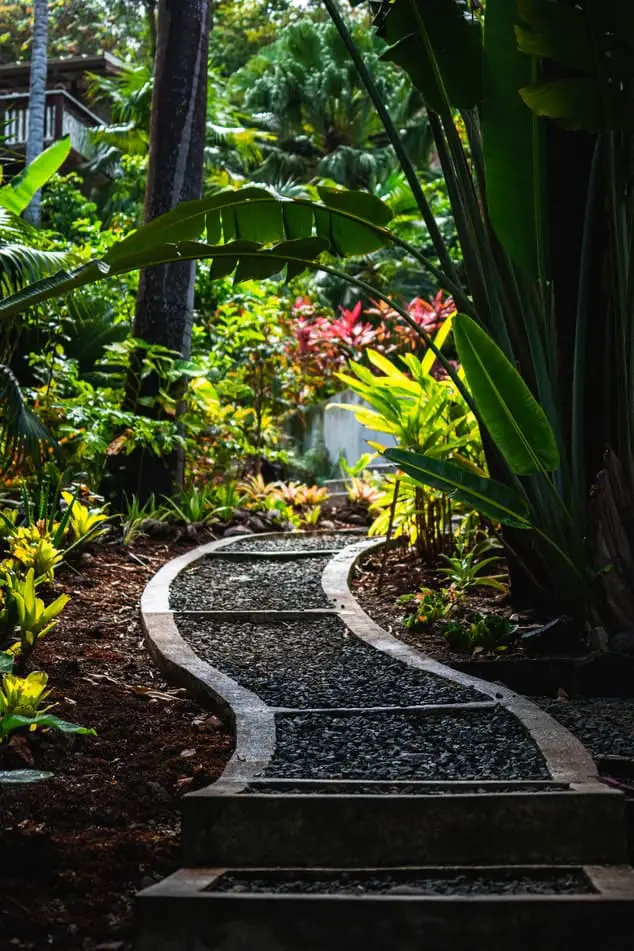Decorative concrete landscape edging (curbing) is a durable, very long-lasting, and creative way to frame your landscape planting beds. Attractive concrete landscape edging not only edges your beds securely and keeps your soil and mulches inside where they belong, but it also adds a fabulous new look to any yard. Decorative concrete landscape edging highlights your flower bedding and can also provide you with beautiful pathways where you can stroll through your garden.
Concrete landscape edging can be used in many different ways in your landscape. As mentioned above, the edging of planting beds and pathways has long been the standard. In addition to these uses, you can also use this relatively new edging style to border your driveway, edge your pond, delineate your patio, or help keep the mulch around your trees.
Table of Contents
Edging Options
Whether you are contemplating updating your existing landscape or starting from scratch, concrete landscape edging is a very solid (haha) choice. There are many other options, such as natural bed edging, plastic bed edging, rock edging, brick edging, wood edging, and metal edging, but none are quite as long-lived and maintenance-free as concrete edging.
Many types of brick and stone-like manufactured concrete products can be used to edge beds, but these brick-like concrete products are not what this article is about. When we refer to concrete edging in this article, we mean poured or extruded concrete curbing.

Installation Options
Concrete edging (curbing) can be installed in two different ways. There is the long-time, old-school method of setting forms and pouring the concrete, and then there is the new way of doing things. The new way is what they call extruded concrete. The concrete is mixed and applied using an extruding machine.
Old School – Form and Pour
To install the old school method, you will need to excavate a trench to start with a uniform depth and width for your pour. Any time you are pouring concrete, it is essential that it is consistent in width and thickness so that it is balanced and doesn’t shift excessively over time. You also want to be sure that your curbing is rectangular or broader at the bottom than the top. Any concrete pour that is heavier on top than on bottom will tend to tip over time.
Once you have dug a consistent and level trench, you can set your forms. Most people use thin and flexible plywood to form their curves. You can find this at most big box stores. Just look for full-sized sheets of flexible plywood and cut them to size for your project. If you’d like, you can buy forms which will make the job much easier.
You will also need some type of stakes to secure your forms. For stakes, you can choose wood, steel or plastic. Concrete is heavy, so make sure that you stake your forms every six to twelve inches, depending on the curve. If you have long, straight areas, you will probably want a more rigid board so that you don’t need as many stakes.
Once you have your forms leveled and secure, you will need to either order concrete to be delivered or mix your own. Either way, make sure to pour the concrete into the forms starting at the far end and work your way toward the concrete mixer or truck. Once you start, you need to finish it in one pour for each section of curbing. The concrete will need to be compacted, struck, and finished before it hardens. Let it sit for a day, and then strip the forms and backfill with soil.
If you haven’t worked with concrete before, you will need a few tools for this job. Goldblatt makes some pretty decent stuff. This kit should have everything that you will need to set some curbing.
New School – Extruded Concrete
The new style extruded concrete curbing can be installed by do-it-yourselfers, but it is a bit more technical, and we haven’t been able to find any equipment rental shops that rent the extruding machines. So, if you were thinking about laying your own extruded concrete curbing, you would probably need to buy an extruder. Machines such as this generally start around $1000.00 for the most basic models. This hurdle, the fact that you must use a particularly dry mix of concrete and that it helps to have some experience running such a machine, will lead most homeowners to hire a professional for this type of work. The prep is about the same; you need a level, consistent trough in which to place the curbing.
In the Middle
Both types of concrete curbing can be strengthened, if desired, by adding things to the concrete. Many concrete mixes contain fibers that help bind the concrete and prevent cracking. Fibered concrete is also beneficial when creating concrete edging. Another way to strengthen your concrete curbing is to place rebar or cable in the center of your pour. The addition of a continuous length of steel in the center of your pour will always help the concrete resist cracking and hold together better in extreme conditions.
Top it Off
All concrete, regardless of its form, will benefit from a long slow curing period with even and controlled temperatures and moisture. Once cured, the concrete should be sealed with any one of many commercially available concrete sealers. A long curing time and quality sealer will ensure a long-lived and crack-free concrete edge. Check out Concrete Sealers Here
Pros and Cons of Concrete Landscape Edging:
Pros
- Extruded concrete gives you the freedom to craft curves and edges, shapes, and contours to accent your landscape.
- The concrete can be colored to match your garden design, patio, or house.
- Concrete edging prevents unwanted grass, weeds, and roots from invading your flower beds, pathways, and lawn.
- Concrete edging will help keep your gravel or stone patios and walkways neat and tidy.
- While expansion joints are necessary and concrete edging will move with the frost in cold climates, its’ weight and rigidity will help keep it in place as the ground thaws.
- Concrete edging can help prevent runoff during heavy rains.
- Concrete edging is more resistant to deteriorating than most other edging products.
- Concrete edging won’t be damaged by lawn equipment.
- Concrete edging dramatically reduces the need for any edge trimming.
Cons
- Concrete edging is quite permanent. Once it is installed, it is probably the most challenging type of edging to remove if you decide you no longer want it.
- Concrete edging is one of the more expensive lawn edging alternatives.
- Concrete edging is very unforgiving. If you have small children running about your yard, you may want a softer edging alternative.
- If you edge your driveway with concrete in the northern climates, the edging may get broken and pushed aside by your snow plowing company. Residential concrete edging is tough, but not as tough as the curb and gutter that you see on the edges of the road.
- Concrete edging is more rigid and formal than some other options, so it may not mix well with a very laid-back and natural landscape plan.
- Concrete edging requires specialized equipment to install, so it is not as much of a do-it-yourself project as many other edging alternatives.
- Because it is made using concrete, this edging is not as eco-friendly as some other completely natural choices.

Conclusion
Decorative concrete landscape edging isn’t for everyone, nor is it for every yard. Still, it has become relatively popular in the last few years, and it can be seen adorning lawn and garden edges in neighborhoods both large and small. It has been a favorite of large commercial settings for many years, but with recent advances in installation methods and smaller, more efficient installation machines, it is well within reach for most homeowners.

